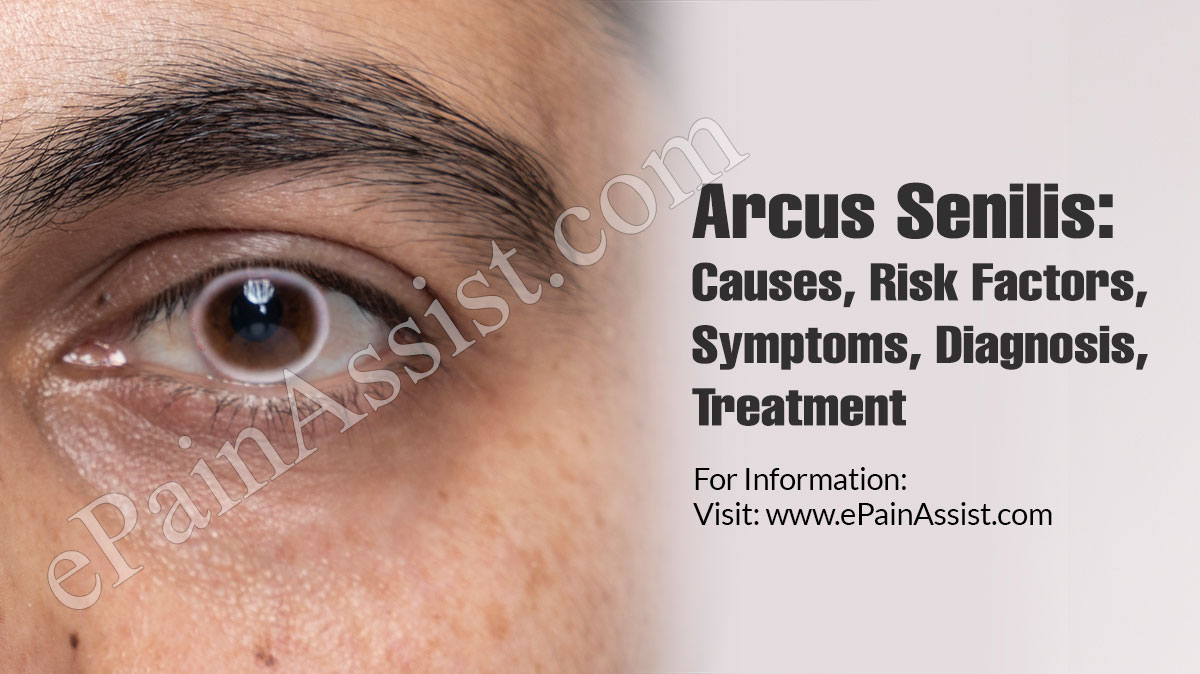What is Arcus Senilis?
Arcus senilis is the appearance of a white, gray, or blue arc around the edge of the cornea.(1) The condition is also known as corneal arcus. It mostly affects the top and the bottom of the cornea and over time the arc grows and forms a complete ring. Arcus senilis is a harmless condition, but, its occurrence in young adults could signal high cholesterol levels.(2) In children and young adults, this condition is referred to as arcus juveniles. Arcus senilis does not affect a person’s vision and also does not signal any serious medical condition.

Causes and Risk Factors of Arcus Senilis
Arcus senilis commonly appears in people as they age and is more common in men. According to the authors of the 2021 article, Arcus senilis is more common in people of Africana and American descent.(2)
Arcus Senilis and High Cholesterol
It is believed by some experts that there is a link between arcus senilis and high cholesterol, which in turn can lead to cardiovascular problems.(3)
Arcus senilis occurs due to the deposition of fat in the outer part of the cornea. The fat comes in the blood from the fatty food taken in the diet and the liver also produces it. Cholesterol is one type of fat that appears in the blood due to various reasons.
As the person ages, the blood vessels widen and more fat and cholesterol gets deposited under the eye. If arcus senilis occur in people below 40 years of age, cholesterol level should be checked for.(2)
Arcus senilis is not a reason for someone’s high cholesterol level. High cholesterol levels can be due to diet, lifestyle, or genetics.
Symptoms of Arcus Senilis
Arcus senilis can lead to white, gray, and blue circles or arc with a sharp outer border, in front of the eyes. If someone has an arc it would complete to forming a circle in front of the eyes.
There is no other symptom in people with arcus senilis and their vision may remain unaffected.
Arcus Senilis and Cataract
A cataract is the clouding in the lens that occurs due to a change in its protein structure. It prevents the passage of light through the lens causing blurred vision. It may grow over time and impede vision.
A cataract is age-related but can also develop early in life or as a response to disease, trauma, and even some babies are born with it.
Whereas arcus senilis does not cause vision problems but could indicate a health condition.
How is Arcus Senilis Diagnosed?
The eye examination is done to diagnose arcus senilis and it is done with a microscope called a slit lamp. The examination starts with putting special eye drops in the eyes that widen the pupil. This helps in examining the blood vessels at the back of the eyes. The doctor looks for the thickness of blood vessels and signs of atherosclerosis.
If arcus senilis or atherosclerosis is suspected, the patient is referred to a doctor, an internist, or a cardiologist. Further blood tests are recommended to look for the cholesterol level in the blood.
Treatment of Arcus Senilis
Once occurred, it is difficult to fade and disappear. Treating arcus senilis is not necessary. However, if it is due to high cholesterol, a doctor may recommend a diet low in saturated fats and high in fruits, vegetables, and fiber.
Arcus senilis is a common condition that occurs mostly as a person ages, and due to the deposition of fats around the cornea of the eyes. It is common in the elderly as the blood vessel widens as a person ages. In young adults, it could be due to high cholesterol levels. Whatever be the reason, this condition does not cause any complications or affect a person’s vision. If cholesterol is a reason a doctor should be consulted and ways to control the increase in levels should be adopted.
